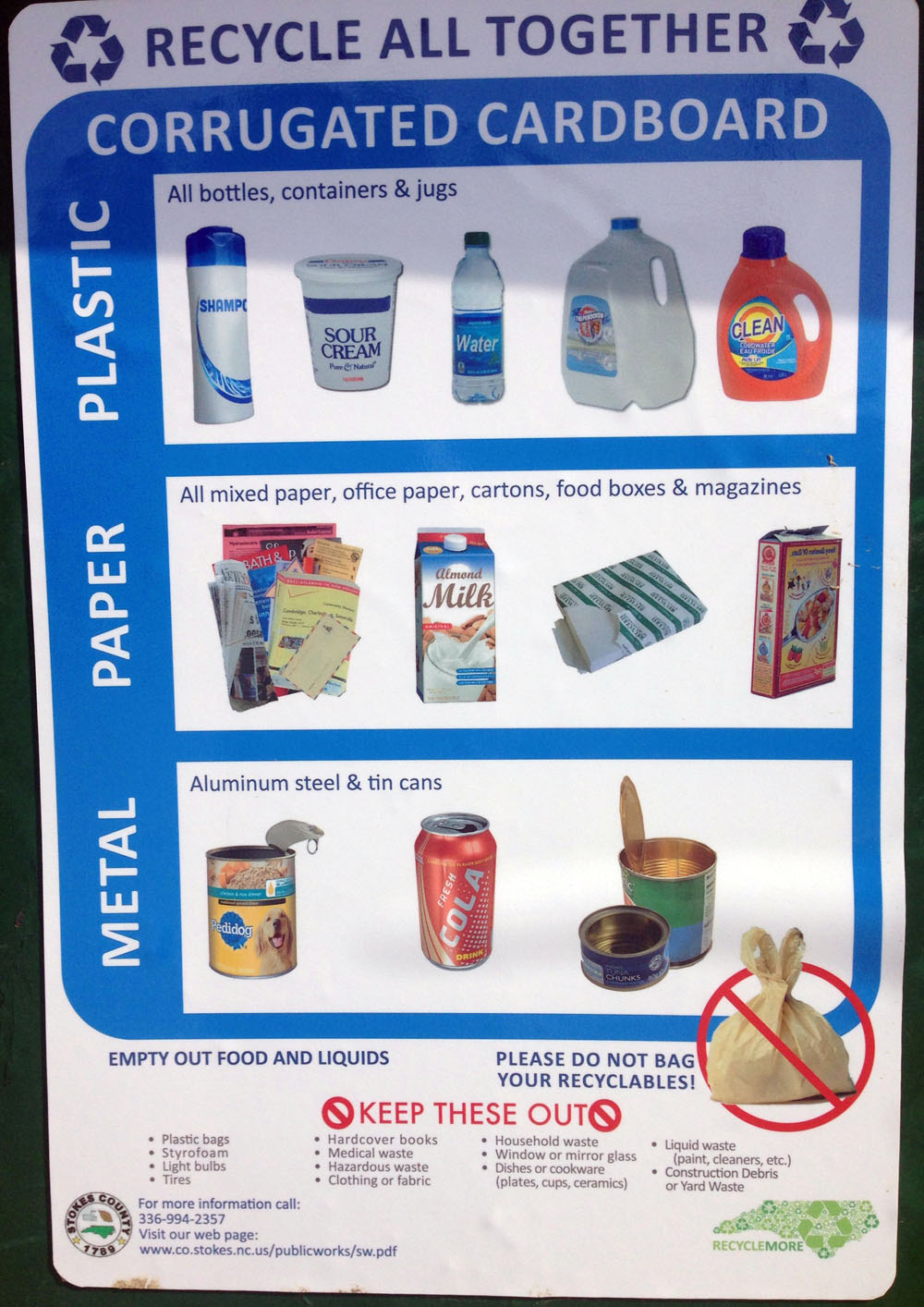
Sign on a county recycling container
Some time back, the county I live in changed its recycling system. In the old system, stuff had to be carefully sorted. For example, green, brown and clear glass had to be kept separate. Plastics, aluminum, and cardboard had to be separated. Steel cans, junk mail, and paper milk cartons were not recyclable at all.
Then everything changed. All the bins were relabeled with no fanfare, no explanation, and no public announcement, as far as I know. Now all glass went into the same place, regardless of color. Everything else could be “commingled,” and dumped willy nilly into the same bin.
I was very skeptical of this new system. It’s obvious that if all that commingled stuff truly was recycled, then somewhere down the line a huge amount of labor would be required to separate everything. I finally got around to making changes in my recycling chores and bins at home to reflect the new system. While I was at it, I did some Googling to try to figure out how commingled recycling can work.
It’s legit. In fact, depending on where you live, you’ve probably had it for ages. It does require a huge amount of labor and machinery downstream. The reason for the move to commingled recycling, I’m guessing, was to make it easier for people and thus to encourage recycling.
If you Google, you’ll find videos of these industrial sorting systems. Some of it is automated. The machinery can sort some stuff based on weight, or by using magnets, or by blowing things with puffs of air. But it also requires a lot of human labor. Humans are stationed along the conveyor belts, picking stuff out and throwing it in bins.
Apparently even junk mail is recyclable with the new systems. Small pieces of cardboard (beer cartons, for example) can be happily commingled, it seems. But our recycling depots here still prefer that large cardboard boxes be broken down and kept separate.
The new commingled recycling systems, now that I have a better understanding of how they work, should help me improve my trash to recycling ratio and simplify my container situation at home. Here in the sticks, where we have to drive our own trash and recyclables to county depots, some storage and organization is required at home. Sometime I would like to measure my compost to trash to recyclables ratio. But I already know that, by far, my trash portion is the smallest.

Our recycled material has been co-mingled for several months. Pickup is every other week and the rolling bin is usually full. In contrast, trash pickup is weekly & our 2-person household averages one bag per week. It took a dedicated effort to get to that, but better than so much trash going the landfill. Households with a garden make an even greater contribution while composting. Living greener is actually living better. My daughter & hubby are a good example on their small farm. Acorn Abbey stands out too. Really enjoy the blog.